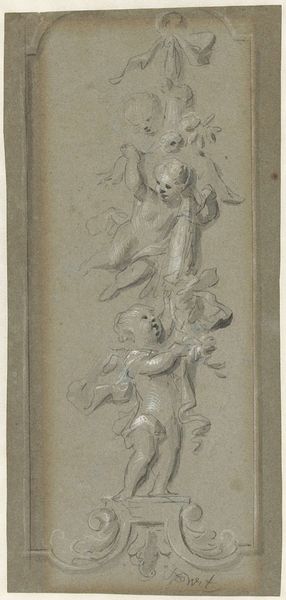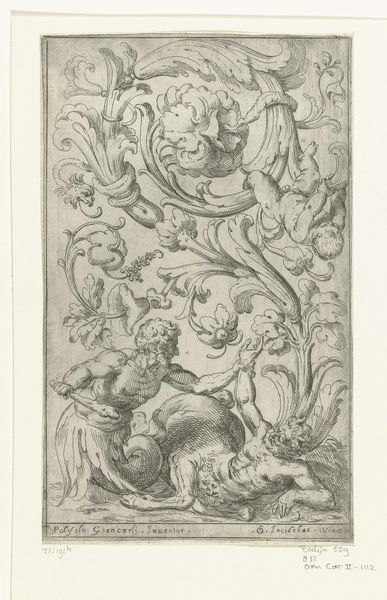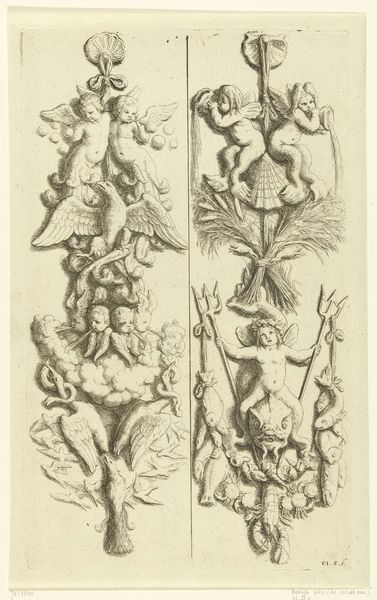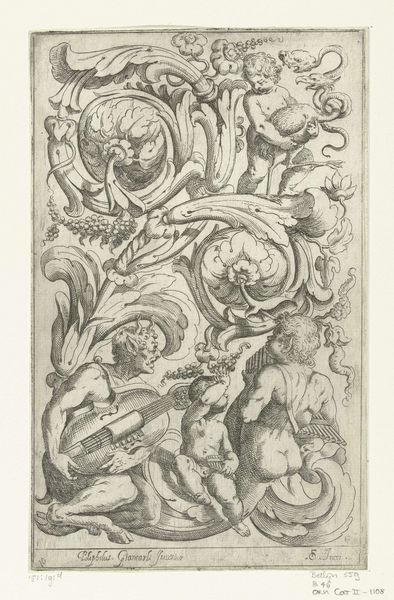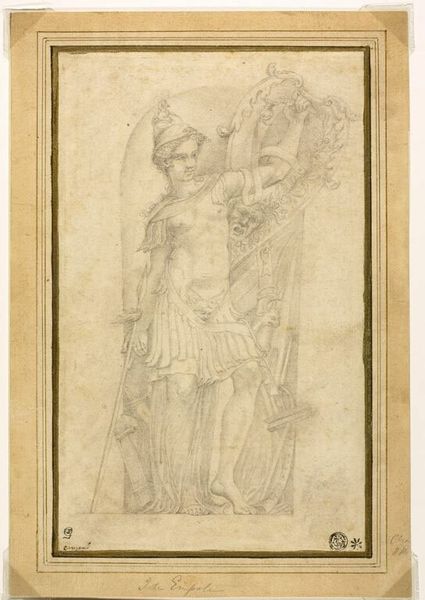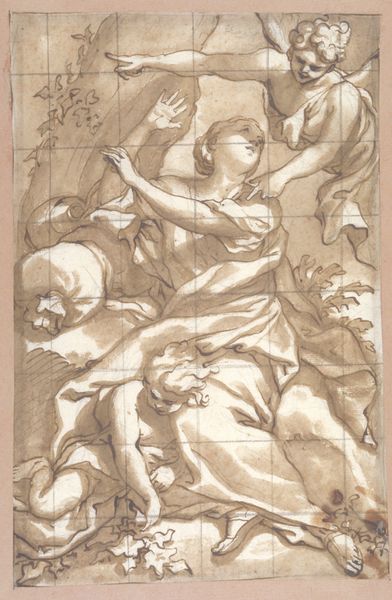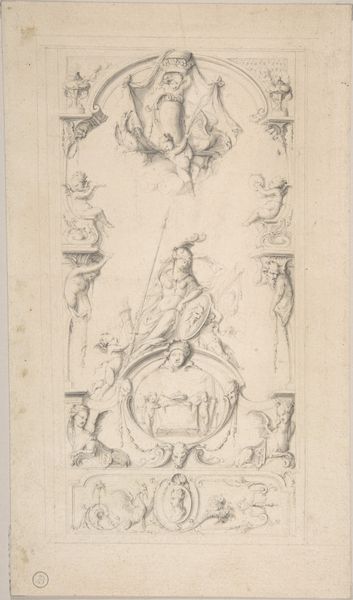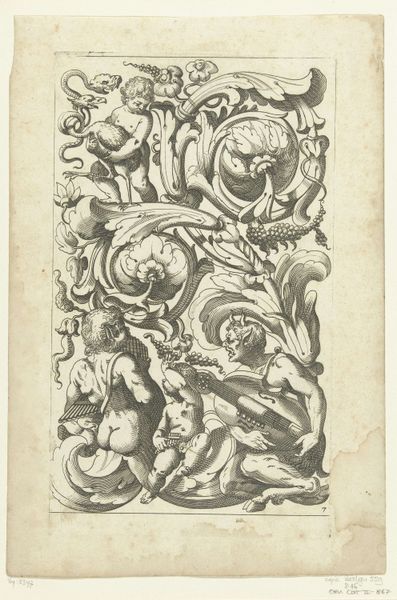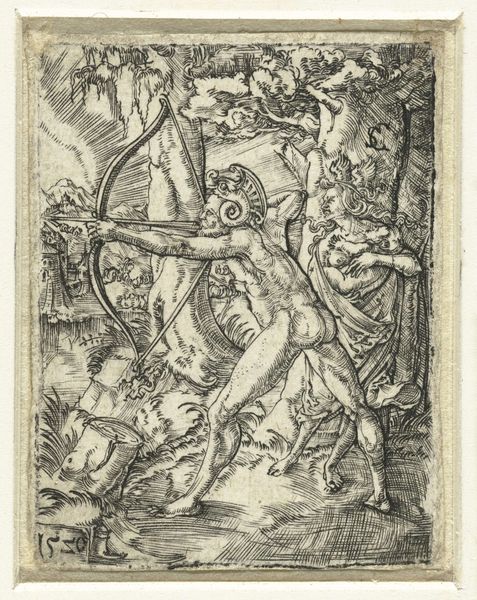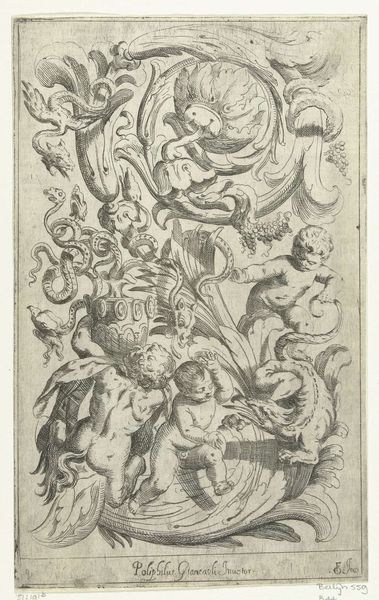
drawing, paper, pencil
#
drawing
#
water colours
#
allegory
#
baroque
#
figuration
#
paper
#
pencil
#
history-painting
#
miniature
Dimensions: height 284 mm, width 132 mm
Copyright: Rijks Museum: Open Domain
Curator: Here we have a work entitled "Ontwerp voor een wandbespanning met twee putti," or "Design for a wall hanging with two putti," by Jacob de Wit, dating from the 18th century. It’s rendered with pencil and watercolours on paper. Editor: Oh, this is charming! The muted palette gives it an almost dreamlike quality. And the chubby cherubs clinging to what looks like a decorative column - are they up to no good, or are they simply enjoying the view? Curator: Well, these putti, or cherubs, are quite typical of Baroque art. They're often used to convey allegorical messages. This drawing likely served as a preliminary design for a larger wall decoration, possibly a tapestry or painted panel. Editor: An initial drawing for some serious opulence! Look how delicately rendered their forms are. There's an implied softness to those cherubic figures, that even I, a modern art fiend, finds captivating. It's funny to think this carefree sketch was a step towards grand ornamentation. Curator: The placement of such designs in grand homes served a purpose. These weren’t merely decorative, they would be tools used to elevate the stature of their commissioners, reminding visitors of their wealth and sophisticated taste. De Wit himself was highly sought after for such decorative schemes. Editor: So, like a really ornate mood board intended for aristocrats? But even knowing all that, I still circle back to those mischievous-looking cherubs. Their poses and expressions... there’s this sense of playfulness despite the formality of it all. Do you think De Wit added a little of his own spirit into this work, his own breath of life, as it were? Curator: It's a compelling thought! While commissioned artwork often adheres to certain established conventions, there's always room for an artist's personal touch. De Wit would have been aiming to delight his patron but also showcase his skill as an artist. Editor: Well, whether a symbol of wealth, sophistication, or simply playful artistry, it has clearly held up! It leaves me considering the layers of intent and expression folded into what could easily be written off as a simple decorative drawing. Curator: Indeed, a single artwork holds such complex meanings when we understand the period of creation and artist's intent.
Comments
No comments
Be the first to comment and join the conversation on the ultimate creative platform.
